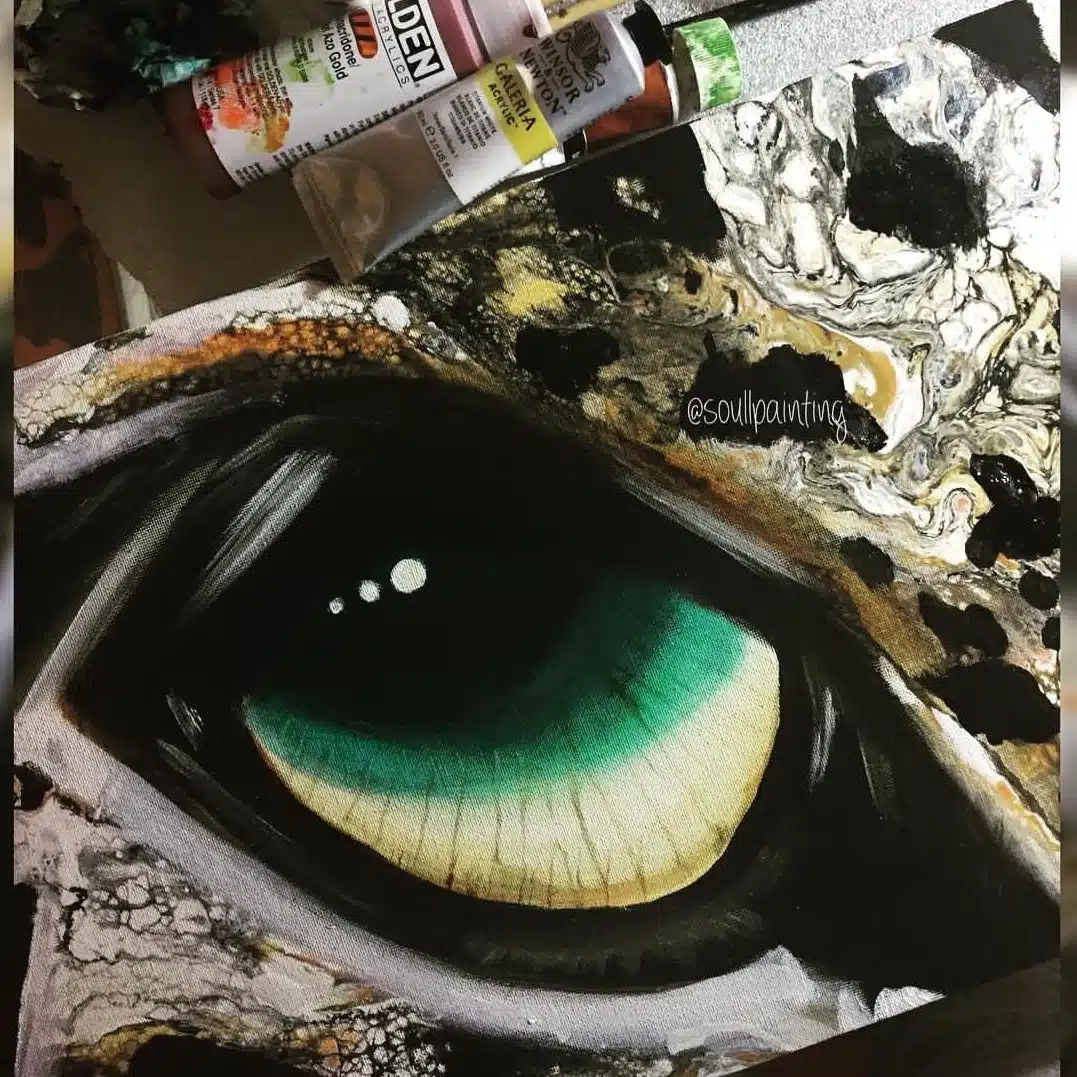Acrylic pouring art has become increasingly popular over the last few years. There are so many artists out there all creating beautiful and unique works of art – some are very new to it, some are seasoned, some sell their art and others make it just for fun!
If you are interested in trying out acrylic pouring for the first time, then this post will come in handy.
We have teamed up with a wonderful artist named Jasvir to find the answers to some popular questions about acrylic pouring.
Not only does she create beautiful pours, but she also uses a combination of pours alongside the more traditional style of painting and even sculpture! Her style is so varied and unique, so we were very excited to speak with her.
Which products do you use?
I use Owatrol Floetrol as my pouring medium, when I don’t have Floetrol in stock I use a mix of PVA glue and water as a pouring medium. I also use 3-4 drops of silicone oil to get the cell effect.
Why do you use these particular products?
Floetrol is a perfect consistency for acrylic pours and fluid art, even if I don’t add silicone to my mix I will still get the cell effect on my pours. Silicone oil not only gives great cells it also adds extra texture to the pours.
Which tools do you use/recommend?
I use a kitchen torch over the wet pour to release any air bubbles and create more cells on the pour.
What ratio of products do you use/recommend?
If I am using Golden Fluid Acrylics I use 3 parts Floetrol and one part Golden Fluid Acrylics. If I am using any other acrylic paint, which is less fluid I will use half Floetrol and half Acrylic paint – the consistency of the pour mix needs to be a little less runny than honey.
What tips do you have for beginners?
Practice makes perfect. Keep trying different ratios of the pour mix, the cell effect and final finished piece depends on the room temperature. Make sure you don’t leave your pour drying in direct heat or sunlight. Don’t overuse the torch, as this may burn the top layer of your paint and ruin the painting.
Don’t be disheartened if you don’t achieve the results you see most fluid artists achieve. It took me a lot of patience and practice to finally do a good pour. Add very little or no water at all to your pour mix. Water breaks down the cell formation (from my experience).
Which acrylic pouring artists inspire you?
Not one in particular but all artists and every art style inspires me. I am learning every day.
Anything you wish you knew when you were starting out?
You will need a lot of patience and practice, the perfect pour (if such a thing exists) doesn’t happen overnight. I wish I had discovered Floetrol earlier 🙂
Any further tips or advice?
Keep creating and making art, even on my worst days when the ‘Artist Block’ takes over I pick up my paintbrush and paint!
So there you have it, answers straight from the artist’s mouth!
For handy tutorials or advice, Jasvir has a YouTube channel full of inspiring videos which we highly recommend checking out. You can also find her on Facebook & Instagram
Thank you so much for your time Jasvir. We are very big fans and can’t wait to see what you create next!
If you have any tips, tricks or advice for others, please leave them in the comments section below. We love hearing from you!
To keep up to date with the latest news of all things Owatrol, why not follow us on social media? You can find us on Facebook, Twitter, Instagram and Pinterest @owatroluk. If you use any of our products, please feel free to tag us or use #owatroluk










